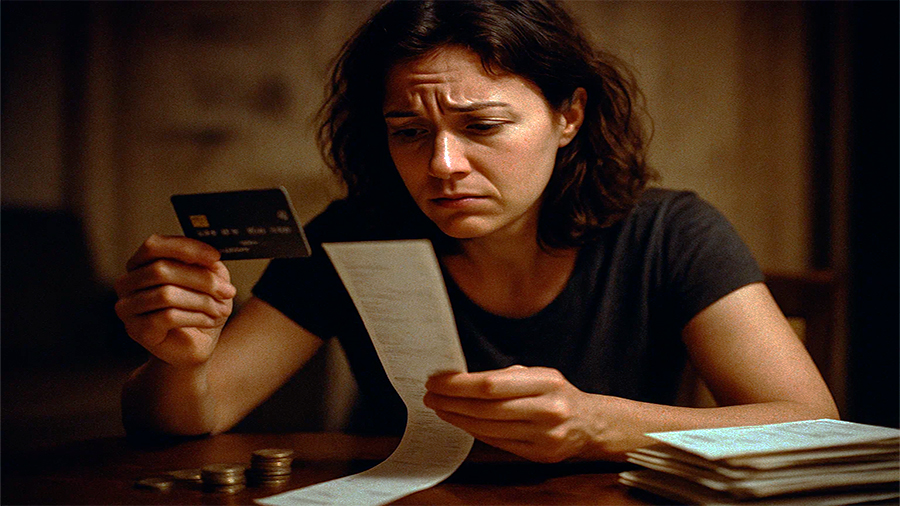
Mistakes When Using Credit Cards
Credit cards can be powerful tools or financial traps — it all depends on how you use them. For many people, the problem isn’t the plastic itself, but the habits that come with it. Emotional purchases, the illusion that it’s “just a swipe,” and the creeping cost of compound interest all play a role in long-term debt. These aren’t just technical missteps — they’re behavioral patterns that quietly shape your finances month after month. Understanding these mistakes is the first step toward breaking the cycle and regaining control over how you spend and borrow.
Emotional Spending: Buying to Feel Better
When people are stressed, bored, or celebrating, they often turn to shopping — and credit cards make it incredibly easy. The separation between the act of purchase and the actual payment delays financial consequences. You get the dopamine hit without the sting of cash leaving your hand. That delay rewires your behavior and encourages short-term decisions with long-term costs.
Emotional spending isn’t just about big-ticket items. It often shows up in smaller, repeated purchases — food delivery, clothes, electronics, beauty products. These “harmless” habits add up quickly, and because the payments are deferred, you lose track of how much you’ve actually spent. This creates a cycle where shopping becomes a form of emotional regulation rather than a practical need.
Why Credit Magnifies Emotion-Driven Decisions
- There’s no immediate loss of funds — only a promise to pay later.
- Rewards programs encourage frequent use, even without financial need.
- Retailers often push credit cards during checkout to amplify sales.
Without setting emotional boundaries, credit cards start driving your behavior instead of supporting it.
The Illusion of Affordability
Credit cards make unaffordable things seem affordable. That’s the trap. A $300 purchase may feel like “only $25 a month,” but that low payment stretches out the debt and inflates the final cost. If you’re not careful, this illusion convinces you that you can spend more than your income realistically supports.
Many people view their available credit as available money. This mindset leads to overcommitting — paying minimums on multiple cards while the balances grow. Instead of managing debt, you’re managing perceptions. The belief that you can always “pay it off later” makes it easy to justify purchases you can’t truly afford.
| Item | Purchase Price | Minimum Payment | Total Cost After Interest (24% APR) |
|---|---|---|---|
| Laptop | $1,000 | $30 | $1,620 |
| Phone | $800 | $25 | $1,280 |
| Furniture | $1,500 | $45 | $2,430 |
These figures show how “manageable” minimum payments are often just entry points into long-term, high-interest obligations. The longer you carry the balance, the more the illusion costs.

Misunderstanding Interest and Payment Structures
Most cardholders don’t fully understand how credit card interest works. Interest is charged not just on what you buy, but on what you carry over. If you don’t pay the full balance by the due date, you start paying interest on the remaining amount — and sometimes on new purchases as well. If you continue to pay only the minimum, the debt grows faster than it shrinks.
This structure is designed to benefit issuers, not consumers. It’s why your $2,000 balance could still be there years later even if you’ve been making regular payments. Many people think they’re staying “on top” of their card by paying the minimum, but that only delays progress and extends the life of the debt.
The Hidden Power of Compounding Interest
- Interest is charged daily — not monthly — on most credit cards.
- Carrying a balance means you also lose your grace period on new purchases.
- Late payments often increase your interest rate through penalty APRs.
The longer the balance stays, the more you pay in invisible charges that chip away at your financial health.
Overuse of Multiple Cards
Using multiple credit cards can create a false sense of security. Each one gives you a new spending limit, and when one maxes out, another is there to pick up the slack. But this approach spreads your debt across several balances and increases your mental load. It’s harder to track spending, monitor interest, and catch billing errors when you’re juggling five cards instead of one.
More cards also increase your risk of missed payments, which damage your credit score. A single late payment can stay on your report for years. And once you start rotating balances — paying one card with another — you’re not managing debt, you’re just pushing it around.
| Credit Card | Balance | Interest Rate | Monthly Payment |
|---|---|---|---|
| Card A | $2,000 | 21% | $60 |
| Card B | $1,500 | 24% | $45 |
| Card C | $3,000 | 19% | $90 |
At first glance, these look like manageable payments. But the interest adds up quickly — and you’re spending over $100 a month just to keep balances from growing. That’s money not going toward actual debt reduction.
Chasing Rewards at the Expense of Stability
Rewards programs are designed to increase spending. Cashback, points, airline miles — they all create incentives to use your card more often. That’s fine if you pay your balance in full every month. But if you’re carrying a balance, those rewards are meaningless. The interest you pay will always outweigh the perks you earn.
Many people fall into the trap of justifying overspending because they’re “getting points.” But a 2% cashback doesn’t help if you’re paying 20% interest. Worse, some rewards programs encourage specific purchases — flights, restaurants, luxury goods — pushing you to buy things you wouldn’t normally consider.
The Real Cost of Rewards Misuse
- $500 spent to get $10 in cashback isn’t smart if it creates $50 in interest.
- Bonus thresholds often lead to unnecessary spending (“spend $3,000 in 90 days”).
- Annual fees and penalty rates can erase all reward gains if balances aren’t cleared.
Used responsibly, rewards can offer benefits. But once they influence your decisions instead of following them, they become expensive distractions.

Neglecting to Monitor Statements and Fees
Credit card statements contain a lot more than just your balance. They include transaction histories, interest charges, fees, and changes to terms. Yet many people never look at them. Skipping statements means missing billing errors, fraudulent charges, or creeping fees like over-limit penalties and foreign transaction costs.
Card issuers regularly adjust terms — increasing interest rates, reducing grace periods, or modifying reward rules. These changes often go unnoticed if you’re not reading statements or policy updates. That ignorance can cost you hundreds over time, especially if your usage habits no longer match the card’s fee structure or benefit tiers.
What to Look for Each Month
- Unexpected fees or rate changes
- Recurring subscriptions you forgot to cancel
- Duplicate or fraudulent charges
Active monitoring keeps you aware, responsive, and in control — all key to avoiding unnecessary costs.
The Conclusion
Credit card mistakes don’t usually happen all at once — they build slowly through habits and assumptions. Emotional purchases, minimum payments, and unclear interest charges combine to create long-term debt that feels unmanageable. Misunderstanding how credit works opens the door to financial stress, damaged credit, and wasted money. But these aren’t unfixable problems. With awareness, strategy, and consistent behavior, you can turn your credit card from a burden into a tool. The key is to control how you use it — not let it control you.
